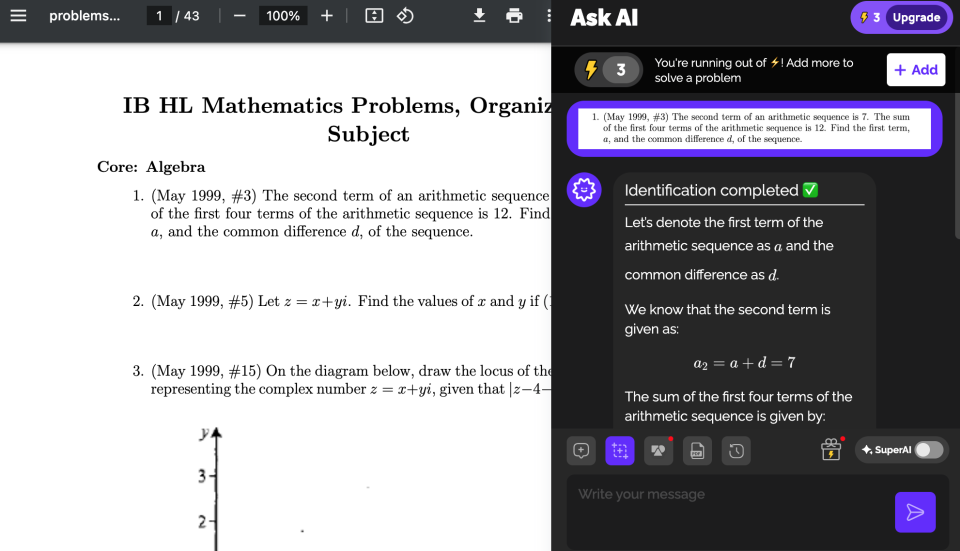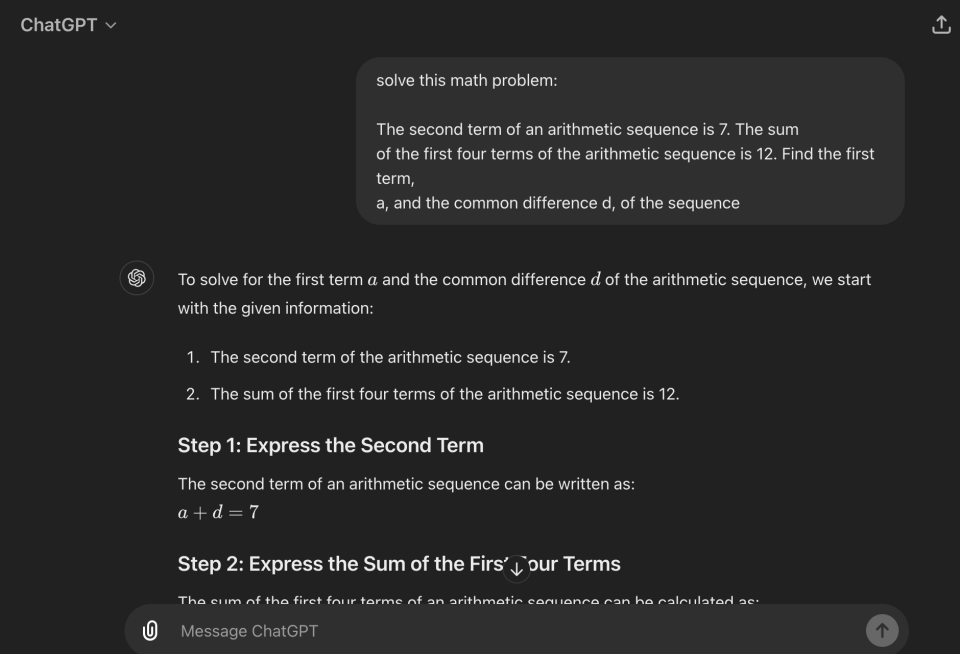AI tutors are quietly changing how kids in the US study, and the leading apps are from China
Evan, a high school sophomore from Houston, was stuck on a calculus problem. He pulled up Answer AI on his iPhone, snapped a photo of the problem from his Advanced Placement math textbook, and ran it through the homework app. Within a few seconds, Answer AI had generated an answer alongside a step-by-step process of solving the problem.
A year ago, Evan would be scouring long YouTube videos in hopes of tackling his homework challenges. He also had a private tutor, who cost $60 per hour. Now the arrival of AI bots is posing a threat to long-established tutoring franchises such as Kumon, the 66-year-old Japanese giant that has 1,500 locations and nearly 290,000 students across the U.S.
"The tutor's hourly cost is about the same as Answer AI's whole year of subscription," Evan told me. "So I stopped doing a lot of [in-person] tutoring."
Answer AI is among a handful of popular apps that are leveraging the advent of ChatGPT and other large language models to help students with everything from writing history papers to solving physics problems. Of the top 20 education apps in the U.S. App Store, five are AI agents that help students with their school assignments, including Answer AI, according to data from Data.ai on May 21.
There is a perennial debate on the role AI should play in education. The advantages of AI tutors are obvious: They make access to after-school tutoring much more equitable. The $60-per-hour tutoring in Houston is already much more affordable than services in more affluent and academically cutthroat regions, like the Bay Area, which can be three times as expensive, Answer AI's founder Ric Zhou told me.
Zhou, a serial entrepreneur, also suggested that AI enables more personalized teaching, which is hard to come by in a classroom of 20 students. Chatbot teachers, which can remember a student's learning habits and never get grumpy about answering questions, can replace the private coaches that rich families hire. Myhanh, a high school junior based in Houston, said her math grades have improved from 85 to 95 within six months since using generative AI to study.
For now, AI tutors are mostly constrained to text-based interactions, but very soon, they will literally be able to speak to students in ways that optimize for each student's learning style, whether that means a more empathetic, humorous, or creative style. OpenAI's GPT-4o already demonstrated that an AI assistant that can generate voice responses in a range of emotive styles is within reach.
When AI doesn't help you learn
The vision of equitable, AI-powered learning isn't fully realized yet. Like other apps that forward API calls to LLMs, AI tutors suffer from hallucinations and can spit out wrong answers. Answer AI tries to improve its accuracy through retrieval augmented generation (RAG), a method that fine-tunes an LLM with certain domain knowledge -- in this case, a sea of problem sets. But it's still making more mistakes than the last-generation homework apps that match user queries with an existing library of practice problems, as these apps don't try to answer questions they don't already know.
Some students are aware of AI's limitations. Evan often cross-checks results from Answer AI with ChatGPT, while Myhanh uses Answer AI in an after-school study group to bounce ideas off her peers. But Evan and Myhanh are the types of self-driven students who are more likely to use AI as a learning aid, while some of their peers may handily delegate AI to do their homework without learning anything.

For now, educators aren't sure what to do with AI. Several public school districts in the U.S. have banned access to ChatGPT on school devices, but enforcing a ban on generative AI outright becomes challenging as soon as students leave school premises.
The reality is, it's impossible for teachers and parents to prevent kids from using AI to study. It's hard to discern whether a student has learned to solve a math problem by heart based on the answer they write, and detecting when essays have been written with AI is (so far) heavily flawed, too. So it may be more effective to educate kids on the role of AI as an imperfect assistant that sometimes makes mistakes rather than prohibit it completely.
Chinese dominance
As of May, the two most popular AI helpers in the U.S. are both Chinese owned. One-year-old Question AI is the brainchild of the founders of Zuoyebang, a popular Chinese homework app that has raised around $3 billion in equity over the past decade. Gauth, on the other hand, was launched by TikTok parent ByteDance in 2019. Since its inception, Question AI has been downloaded 6 million times across Apple's App Store and Google Play Store in the U.S., whereas its rival Gauth has amassed twice as many installs since its launch, according to data provided by market research firm Sensor Tower. (Both are published in the U.S. by Singaporean entities, a common tactic as Chinese tech receives growing scrutiny from the West.)

The success of Chinese homework apps is a result of their concerted effort to target the American market in recent years. In 2021, China imposed rules to clamp down on its burgeoning private tutoring sector focused on the country's public school curriculum. Many service providers, including brick-and-mortar tutoring centers and online study apps, have since pivoted to overseas users. The U.S. is unsurprisingly their most coveted international market due to its sheer size.
The fact that tutoring apps are likely to be using similar foundational AI technologies has leveled the playing field for foreign players, which can overcome language and cultural barriers by summoning AI to study user behavior. As Eugene Wei wrote in his canonical analysis of TikTok's global success,"[A] machine learning algorithm significantly responsive and accurate can pierce the veil of cultural ignorance."
The reliance on the same group of LLMs also makes it hard for these study apps to differentiate solely on the quality of their answers. Some of the legacy players, like Zuoyebang and Photomath, can use a combination of generative AI and search in their extensive libraries of problem sets to improve accuracy. Newcomers will need to find alternative ways to set themselves apart, like enhancing user personalization features.
"An AI agent needs to proactively engage with students and tailor its answers to individual learning needs," said Zhou. "A raw language model isn't a ready-to-use AI agent, so we try to differentiate by fine-tuning our AI to teach more effectively. For example, our AI bot would invite students to ask follow-up questions after presenting an answer, encouraging deeper learning rather than just letting them copy the result."
Updated to correct text that stated AI can be used to detect essays written using AI: It cannot.

 Yahoo Finance
Yahoo Finance 